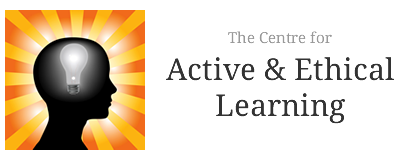A New Category of Child Abuse
Our Campaign is to encourage, debate and seek legislation to stop commercial and corporate targeting of children and young people and sexualisation of children and young people
The centre organised the first ever event in the UK on whether corporate, commercial and sexual exploitation of children and young people is a new and wider form of significant harm. On the 22nd March, 2012 and 22nd November, 2013 two important events on child protection took place in London.
These events featured important national and international speakers who each made their own specific contributions towards the debate.
A publication based on the events of March 2012, November 2012 & 19th June 2013 event this year. The publication will be released at a national conference on the 19th June 2013 event in London.
Jim Wild organised these events and assembled an exciting list of speakers who all had important things to say in their specific areas of expertise. Jim suggests that the definition of ‘significant harm’ needs re-evaluating and a wider understanding of terms and definitions of ‘child abuse’ should be considered to include corporate, commercial and sexual exploitation of children and young people. It should be noted that this was not a view necessarily held by those who are speaking today but all the speakers have a vast array of knowledge, skills and expertise to help delegates to explore the notion of corporate and commercial exploitation of children and young people. In his opening overview of the day Jim suggested we look at the evidence presented. Has western society reached a critical point in the way it targets children and young people, which now leads them towards addictive hybrid consumer-orientated lives? We have 24-hour bombardment of their minds to eat, purchase, imitate, possess or conform. Child protection and child care professionals are invited to examine the evidence – the excessive imagery, junk food, extreme body images, access to pornography and allure of celebrity. There is now so much corporate targeting of children and young people that they consume without objective consent or informed knowledge. We now face a new diagnosis of ‘significant harm’ and Local Safeguarding Children’s Boards must provide advice and support to parents, practitioners and local policy makers.
Some Key Questions to Consider
The Concept of Significant Harm
The Children Act 1989 introduced the concept of ‘Significant Harm’ as the threshold that justifies compulsory intervention in family life in the best interests of children and gives local authorities a duty to make enquiries to decide whether they should take action to safeguard or promote the welfare of a child who is suffering, or is likely to suffer significant harm. There are no absolute criteria to rely on when judging what constitutes Significant Harm. Working Together to Safeguard Children 2010 (paragraph 1.28) gives the following definition: 'Consideration of the severity of ill-treatment may include the degree and the extent of physical harm, the duration and the frequency of abuse and neglect, the extent of premeditation, and the presence or degree of threat, coercion, sadism, and bizarre or unusual elements. Each of these elements has been associated with more severe effects on the child, and/or relatively greater difficulty in helping the child overcome the adverse impact of the maltreatment. Sometimes, a single traumatic event may constitute significant harm, e.g. a violent assault, suffocation or poisoning. More often, significant harm is a compilation of significant events, both acute and long-standing, which interrupt, change or damage the child’s physical and psychological development. Some children live in families and circumstances where their health and development are neglected. For them, it is corrosiveness of long-term emotional, physical or sexual abuse that causes impairment to the extent of constituting significant harm. In each case, it is necessary to consider any maltreatment alongside the child’s own assessment of his or her safety and welfare, the family’s strengths and supports, as well as an assessment of the likelihood and capacity for change and improvements in parenting and the care of children and young people.'
Some Questions to Link to this Definition
- The nature of the commercial or corporate harm - in what context does it take place - is it immediate in effect, will there be longer term effects?
- The impact on the child’s health and development - is their any objective evidence that the targeting of corporate and commercial interests have adverse effects?
- It’s significance - the extent of the impact and adversity it may have on the child or young persons development
- Psychological effects - on wellbeing, self-esteem, identity
- The level and frequency of targeting
- The ability of children and young people to have awareness of what is happening to them and the extent to which they are able to give objective consent and have informed knowledge.
